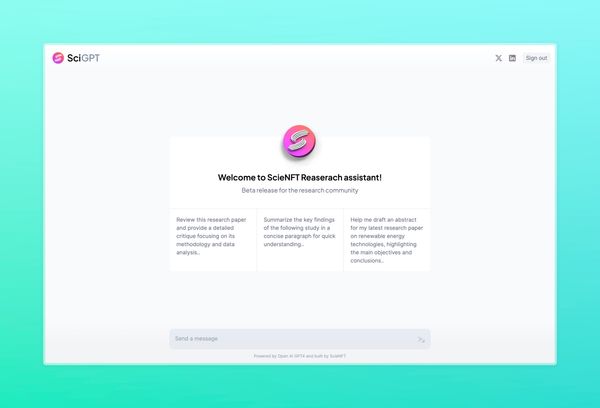Science in 2100
Today, an explosion of new technology and computing power shows Moore’s Law in effect. Technological progress has become exponential; concepts that were considered unthinkable a few years ago now seem completely inevitable within the next 100 years.

Fifty years ago, Gordon Moore observed that the number of transistors in integrated circuits doubled and would continue to double every year. This observation has been called Moore’s Law, and is an example of how technology combined with experience breed advancements an ever-increasing rate.
Today, an explosion of new technology and computing power shows Moore’s Law in effect. Technological progress has become exponential; concepts that were considered unthinkable a few years ago now seem completely inevitable within the next 100 years.
Although electric cars became commercially available relatively recently, it is almost inevitable that within the next 50-100 years most if not all vehicles (including trucks, boats, and more) will be electric. Progressions in synthetic and stem cell biology promise to move humanity away from classical agricultural models, putting an end to animal-based meat. While it might not yet seem obvious to all, these profound changes are already at work, supported not only by technological progress but also visionary leaders and significant investment. The scientific industry is producing advancements for the world like never before.
But what advancements will the art of scientific knowledge production undergo? How will science be shared 100 years from now?
A close look at the current scientific publishing industry reveals many flaws. Indeed, the only aspect of science that seems immune to rapid advancement seems to be the field of scientific research production itself. The 10 million researchers who develop scientific advancements must compete for funding through lengthy grant writing processes that are far removed from scientific innovations. The competition for funding feeds into the fast-growing scientific publication industry (currently worth $30 billion dollars), which incentivizes researchers to prioritize publication in high impact journals over performing the best research possible and quickly sharing their results. Journals with a limited number of spots determine what information is published, which can lead to problems.
For example, studies that find negative results are almost never published; the number of experiments unknowingly repeated by multiple groups must be staggering. Despite the progress of the internet, the diffusion of scientific knowledge is stuck in last century’s model, and while there are many critics of this system, mainstream publications continue to dominate scientific mindsets. This has not been significantly changed by open source innovations and pre-print systems. The scientific publishing industry is ready for an update, and emerging technologies make now the time to envision these changes.
The Future of Science in the last year, two major scientific triumphs illustrated the future of the scientific field. The first was the absolutely incredible application of AI and Alpha fold technology to protein 3D confirmation. The AI designed by Deep mind to tackle the Go game resolved one of the most critical problems of biochemistry and gave researchers tools to understand protein folding and, therefore, protein function. Way earlier than expected by most scientists, a field based on heavy technological set-ups (X-ray crystallography, NMR) shifted to a computational “game” requiring minimal human labor.
This monumental leap in biochemistry is emblematic of the strides that will be made astools such as artificial intelligence are developed and deployed. Our computing power has never been so great, and it is increasing at a speed beyond our perception. Within the next 50 years, the amount of computing power we will be able to develop exceeds most probably not only our predictions but also our imaginations. Such computing power will be driven by quantum computing, the integration of biology in data storage, and other unforeseen technologies. The ability to grasp almost infinite data sets and their modeling power will tremendously impact scientific findings. AI will overcome our incapacity as humans to integrate the complexity of the world around us as well as our limited ability to create sophisticated statistical models. Our computing power will allow billions of heterogenous data sets to be integrated and examined together, leading to hypothesis free, AI-led discoveries beyond our reach. In the era of advanced computing and AI driven research, the role of scientists will be to interpret and use the discoveries that will be made at an unprecedented pace. Drug discovery, regenerative medicine, longevity medicine, mathematics, physics and other fields will change at a pace that the most ambitious researchers cannot imagine today.The second example that shows the future of the scientific field lies in the creation of the COVID vaccine. This vaccine was developed in a year and half, roughly 5 to 10 times faster than any vaccine developed before. This was made possible through a few key factors:comprehensive, efficient information sharing across almost all scientific groups on the planet, the application of synthetic biology, a huge collaboration between academia and industry, and rapid, practically unlimited funding. The creation of the COVID vaccine is a testament to what is possible when the scientific community shares information and works together.
Information sharing and collaboration are the future of scientific practices. Many scientists are calling for decentralized storage and immediate sharing. While the open-source movement has not yet fulfilled its goals, it has gained tremendous interest and marks a shift in the scientific community’s thinking. Concurrently, the funding mechanisms implemented by institutions such as the Gates Foundation clearly show a new direction for obtaining resources. Short grants that are more ideas that can receive a quick small investment(“angel” investors) which can significantly grow based on initial success. The development of web3 technologies based on the blockchain conceptual framework including permanent decentralized storage, transparency, indisputable ownership (NFT technology) will be a corner stone of a new framework for science.Web3 Technology: The Framework for Change Web3 technology has the capacity to usher in a new chapter of scientific collaboration and AI-led discoveries. With these tools, researchers will no longer depend on centralized systems for publishing opportunities; instead, they can decide to share all of their findings immediately, exposing them to the scrutiny of the scientific community and a fair review system that trades anonymity for community-based review and curation. Beyond publication, single experiments, or relevant results could be shared immediately and associated with an NFT, allowing permanent ownership and traceability as well as transparency and access. This will allow the world to become a decentralized global lab and researchers will benefit as early as possible from the exchange of idea and collective intelligence. Once data is immediately shared in a decentralized way, our increasing computational ability and progresses in machine learning can contribute to major scientific shifts across disciplines.
The integration of datasets, specific findings way beyond the ability of the human brain will lead to innovative theories in system biology, physics, mathematics. Year-long problems could be resolved within months, weeks or even days. Our ability to combine, integrate, and make sense of new data will exponentially grow the next few years, and it is possible that most science will be run by artificial intelligence and most hypothesis tested in silicon with robustness exceeding both the Bayesian statistical framework and the inherent variability of in vivo experimentation.
Web3 technologies will be the structural support of AI driven scientific progresses.
Using a Web3 platform to share scientific findings will fundamentally change researchers’ abilities to secure funding and compensation for their work. By minting and selling NFT associated to their work, scientists will gain unprecedented access to capital, accessing global funding instead of just the institutional funding they are familiar with. Scientists will be able to not only put their findings but also their research projects out on a decentralized platform as NFTs. Granting could be perceived hence as an investment and be community or institution based. At the same time, science could become an investment at a much earlier stage than under the current paradigm, allowing even bigger returns for investors.
The scientific publishing industry could undergo the same shift that happened with streaming in the music industry in transportation with Uber as researchers are granted more control over their work. The impact of such a shift will have a tremendous impact on the rate of discoveries.The preliminary steps toward such revolution are already in place. Scientists are a community that evolves quite rapidly and grasps new concepts in a very short period. The next step is to educate them about the framework of Web3, offering them the tools to explore this framework in the most efficient way possible. Once we have demonstrated that the Web3 framework will increase scientific productivity, reduce the friction to access funding, and allow scientists to focus on producing science rather than chasing publications or grants, the shift from the old model happen quite rapidly. While this shift would have been impossible a few years ago, today the advent of a global decentralized research lab seems to be within reach.





